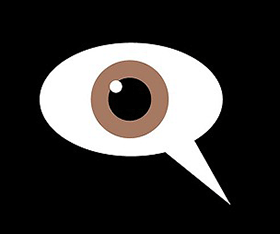Design first and foremost is communication. It’s a language that is easy to learn but infinitely difficult in its execution (Note: just ask anyone who has taken my design courses at UCLAx). As a form of communication it differs immensely from our spoken language. Not only from its obvious use of the senses engaged, but also in its inherent structure.
Vocal languages commonly only stress one side of an interaction. For example, “A stone is hard” describes its properties. It doesn’t convey anything more than a simple one-sided tidbit of information. The structure is very simple–remember your grammar and you’ll understand.
Design is all about a visual language that describes not only a component’s properties but how other things interact with each component in the composition. Each component itself conveys its own set of properties as well as its visual relation to other things around it–the composition also conveys another level of meaning. If done with careful consideration for Composition, Components, and Concept, the visual language of design can communicate and spur more levels of communication long after its initial contact by the viewer. Design can speak to the soul.
So, when you see anything created by humanity, listen to what it conveys. You’d be surprised with the conversation.

